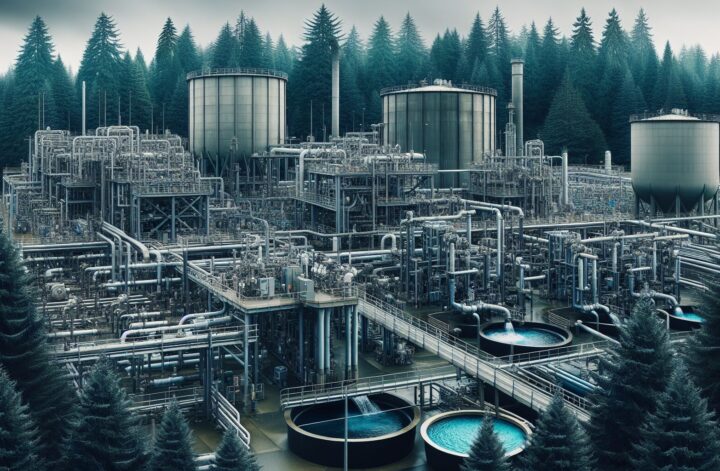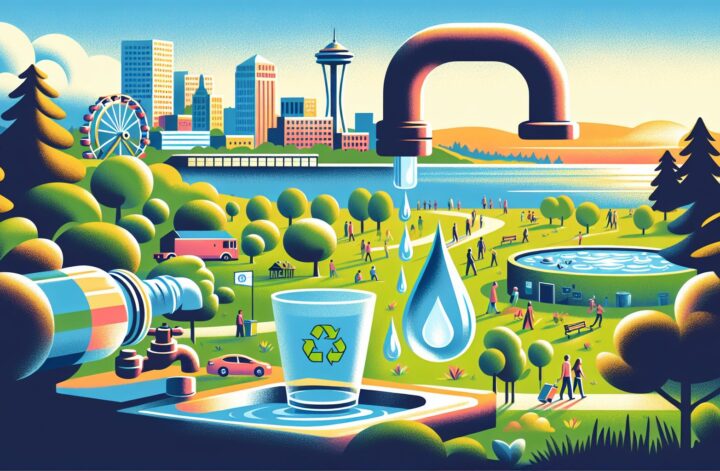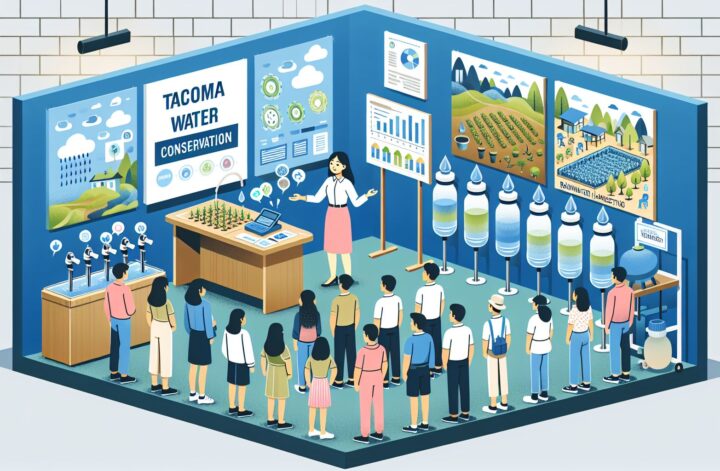Every city and town across the globe has a complex infrastructure in place that allows citizens to access clean, safe water right from their taps. In Tacoma, this immense responsibility is taken care of by Tacoma Public Utilities which manages the city’s water treatment facilities. Seattle’s nearby sister city, Tacoma, Washington, offers an illustrative case study of how a city handles its water treatment. After all, water is a life-sustaining resource – fundamental to community health, economic prosperity, and quality of life.
The Source of Tacoma’s Water
Tacoma’s primary water source is the Green River. The water is captured upstream of the Howard Hanson Dam in the Green River Watershed, an area that is federally protected to ensure the quality of the water[^1^].
It’s a notable fact that Tacoma, unlike many other cities, has a gravity-fed system, which means the flow of fresh water from its source to the treatment plant doesn’t require costly mechanical pumping. As soon as the water reaches the secondary storage at the utility’s North End, the system starts utilizing energy for pumping.
Water Treatment Process
The Tacoma Central Treatment Plant facility sees around 40 million gallons of water every day, from where it’s treated, tested and dispatched to households, businesses and fire hydrants throughout the region[^2^].
The treatment process itself is a multi-step plan. Initially, the raw, untreated water undergoes coagulation, where chemicals cause smaller particles to clump together and form larger particles that can be removed more easily. After the coagulation process, the water is sent to sedimentation basins where the heavy particles settle down. Then, the water goes through a filtration system, in which each filter has a layer of anthracite coal, fine sand, coarse sand, and gravel. This is intended to remove any remaining particles and pathogens disease-causing organisms.
Post-filtration, the water is disinfected using ultraviolet light (UV) which inactivates any residual pathogens. Finally, a small amount of chlorine is added again to ensure the water remains safe as it travels through the distribution system to your tap.
Quality Assurance and Regulations
Tacoma Water works hard to secure that the water quality exceeds local, state, and federal standards. They regularly test the water for over 100 substances to ensure we maintain high safety standards[^3^].
Their lab technicians conduct around 35,000 water tests each year, checking everything from turbidity to bacterial content. Regulations for drinking water come from the federal Environmental Protection Agency and the Washington State Department of Health, and Tacoma Water meets or exceeds all of them, keeping Tacoma’s water among the highest quality in the nation.
Investing in Infrastructure
Treatment processes and water quality assurances are, however, just part of the larger picture. The integrity of a city’s water treatment system is also equally important. Tacoma Public Utilities is dedicated towards maintaining and improving water infrastructure. By implementing infrastructure renewal strategies, modern technologies for leak detection, cross-connection control and more, Tacoma Water is walking the extra mile to ensure the reliability of its water delivery system.
Conclusion
It’s easy to take the blessing of clean tap water for granted, but behind every water drop lies an elaborate process of treatment, testing and trial. With Tacoma Public Utilities’ commitment to quality and safety of the water supply, we can feel confident every time we open our taps.
So the next time you take a sip from your tap remember the efforts taken to turn the Green river water into the pure, safe, and refreshing water it becomes when it reaches you.
[^1^]: Tacoma Water. (2020). About our water. Tacoma Public Utilities. https://www.mytpu.org/water/about-our-water/
[^2^]: Tacoma Public Utilities. (2020). Tacoma Water Quality Report, 2020 https://www.mytpu.org/file_viewer.aspx?id=20503
[^3^]: U.S. Environmental Protection Agency. (2020). Drinking water regulations. EPA. https://www.epa.gov/regulations




